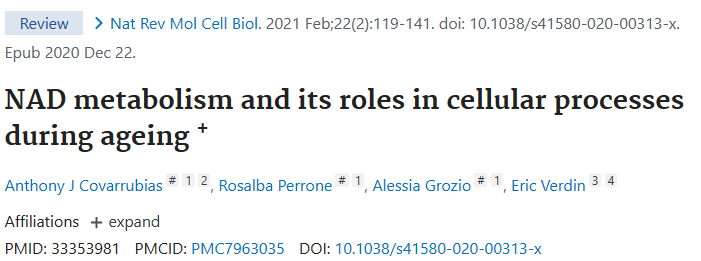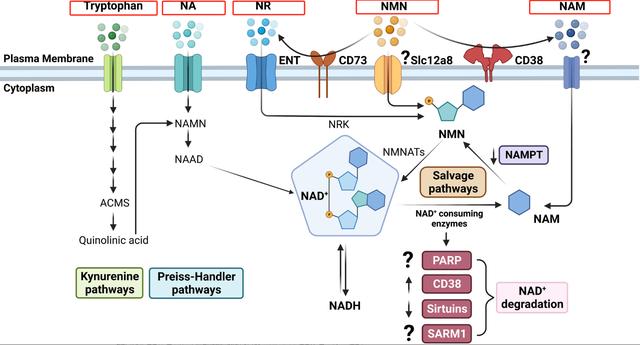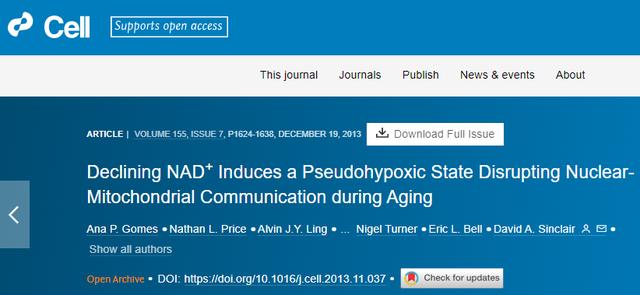There are endless methods for anti-aging, and NMN, as a popular gold anti-aging substance in recent years, is deeply welcomed by the market. By the way, why can NMN become an ideal choice for anti-aging?
What determines aging
Aging is a complex process that is influenced by multiple factors. As one ages, the level of NAD+ in the human body gradually decreases.
Reduced NAD+ levels can lead to weakened cellular energy metabolism, decreased cellular function, and accelerated aging related pathological processes.


Why choose NMN for anti-aging
Since a decrease in NAD+levels in the human body can lead to aging, can we simply supplement with NAD+? This brings us to the particularity of NAD+.
Due to the high activity and instability of NAD+itself, as well as its large molecular weight, it cannot directly enter cells and be absorbed by the human body.
But it can converted into NAD+in the body by supplementing NAD+precursor substances. So, which NAD+precursor is more effective?
① Efficient NAD+supplements
NAD+has a total of five precursor substances, including niacin (NA), tryptophan (Trp), niacinamide (NAM), niacinamide ribose (NR), and β- Nicotinamide mononucleotide (NMN). The other four precursor substances, during their conversion to NAD+, either have blocked pathways or must first converted to NMN before they can converted from NMN to NAD+.
And NMN is a direct precursor of NAD+, which may enter the cell body directly with the help of a transporter protein, without being restricted by rate limiting enzymes or interfering with other physiological activities in the human body, with no side effects.

② Rich scientific research achievements
In 2013, Professor David Sinclair of Harvard Medical School found that mice aged 22 months (equivalent to 60 years old) after birth, who continued to take NMN for a week, had their physical indicators return to a state of 6 months (equivalent to 20 years old).
The relevant research results have published in authoritative academic journals such as Science, Nature, and Cells. Subsequently, various studies focusing on NMN and NAD+ conducted around the world, and the results of the studies also confirmed the correctness of Sinclair’s above conclusions. At present, there are hundreds of research papers related to NMN and NAD+, providing authoritative endorsement for the anti-aging efficacy of NMN.

③ Certified anti-aging effect
A report published in the renowned international journal Elsevier in 2023 shows that supplementing NMN can increase NAD concentration and alleviate age-related diseases such as oxidative stress, DNA damage, neurodegeneration, and inflammatory responses.
In addition, according to incomplete statistics, NMN can also help prevent three high, diabetes,
enhance immunity, prevent hypertension, alcohol metabolism, protect eyesight, improve sleep, etc.
Reference:
- [1]Chini CCS, Cordeiro HS, Tran NLK, Chini EN. NAD metabolism: Role in senescence regulation and aging. Aging Cell. 2023 Jul 9:e13920.
- [2]Gomes AP, Price NL, Ling AJ, Moslehi JJ, Montgomery MK, Rajman L, White JP, Teodoro JS, Wrann CD, Hubbard BP, Mercken EM, Palmeira CM, de Cabo R, Rolo AP, Turner N, Bell EL, Sinclair DA. Declining NAD(+) induces a pseudohypoxic state disrupting nuclear-mitochondrial communication during aging. Cell. 2013 Dec 19;155(7):1624-38.
- [3]Song Q, Zhou X, Xu K, Liu S, Zhu X, Yang J. The Safety and Antiaging Effects of Nicotinamide Mononucleotide in Human Clinical Trials: an Update. Adv Nutr. 2023 Nov;14(6):1416-1435.


